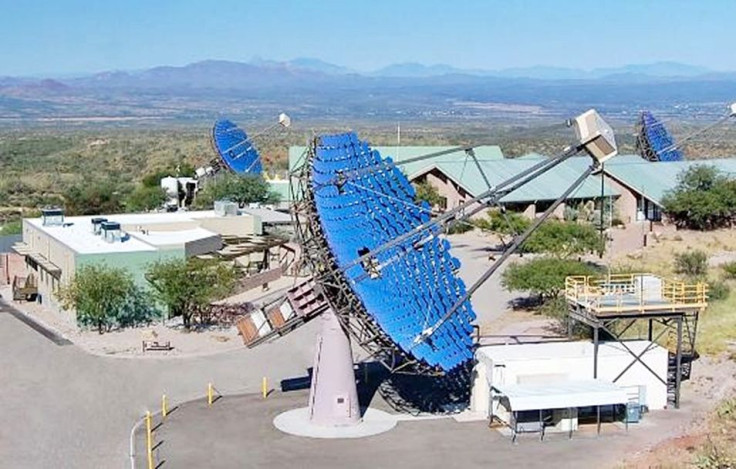Breakthrough Listen Takes New Tack In Search For Intelligent Life In The Universe

Breakthrough Listen, the initiative to find signs of intelligent life in the Universe, has broadened its three year-long search to include scanning for “optical technosignatures,” or signs of technology developed by other intelligent beings.
It currently uses a radio frequency survey and a spectroscopic optical laser survey to listen and look for intelligent life. Now, that search will be expanded to detecting “pulsed optical beacons” -- a sure sign of intelligent life -- in partnership with the VERITAS Collaboration.
VERITAS, or the Very Energetic Radiation Imaging Telescope Array System, is the world’s most powerful telescope array for studying high energy astrophysics with gamma rays.
The collaboration with VERITAS will search for pulsed optical beacons with the latter’s array of four 12-meter telescopes at the Center for Astrophysics-Harvard & Smithsonian, Fred Lawrence Whipple Observatory in Amado, Arizona.
Optical communication is being used by NASA to transmit high definition images to Earth from the Moon. Because of this, there is every reason to believe an advanced civilization might use a scaled-up version of this technology for interstellar communication. VERITAS hopes to detect this.
VERITAS detects gamma rays coming from space by looking for the extremely brief flashes of blue “Cherenkov” light they create when they hit the top of the Earth’s atmosphere. It will look for pulsed optical beacons with durations as short as several nanoseconds. Over such minute timescales, artificial beacons easily outshine any stars that lie in the same direction on the sky.
The simultaneous use of all four telescopes allow for very effective discrimination against false positive detections. The VERITAS Collaboration has previously published observations of the mysteriously dimming Tabby’s Star, also called Boyajian’s Star, in search of such optical pulses.
The partnership with VERITAS will provide complementary searches for optical pulse signatures of many more stars from the primary Breakthrough Listen star list.
“When it comes to intelligent life beyond Earth, we don’t know where it exists or how it communicates,” said Yuri Milner, founder of the Breakthrough Initiatives. “So our philosophy is to look in as many places, and in as many ways, as we can. VERITAS expands our range of observation even further.”
Breakthrough Listen’s search for optical technosignatures with VERITAS will be led by Prof. David Williams of the Santa Cruz Institute for Particle Physics and Department of Physics at the University of California, Santa Cruz, and Prof. Jamie Holder of the Department of Physics and the Bartol Research Institute at the University of Delaware, in collaboration with the Listen team at the University of California, Berkeley’s SETI Research Center (BSRC), led by Dr. Andrew Siemion.
Dr. Siemion noted that Breakthrough Listen is already the most powerful, comprehensive, and intensive search yet undertaken for signs of intelligent life beyond Earth.
“Now, with the addition of VERITAS, we’re sensitive to an important new class of signals: fast optical pulses.”

Published by Medicaldaily.com



























